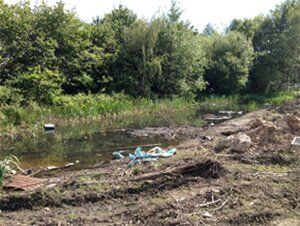The surface water management strategy will also investigate what effect the development will have on these, and outlines measures the developer can take so that runoff rates meet the requirements for the site set by the National Planning Policy Framework (NPPF), the Environment Agency or by local planning policy.
In particular, the SuDS report will demonstrate that the development will conform to the guidance set out in NPPF where:
Paragraph 051 states, the drainage is to be designed to control surface water run off close to where it falls and mimic natural drainage as closely as possible, will provide opportunities to reduce the causes and impacts of flooding, and will remove pollutants from urban run-off at source;
As assessment will be carried out as stated in Paragraph 079 on whether a sustainable drainage system should be considered depending on the proposed development and its location;
And Paragraph 080 where the aim of the surface water management will be to discharge surface run off as high up the following hierarchy of drainage options as reasonably practicable: into the ground (infiltration); to a surface water body; to a surface water sewer, highway drain, or another drainage system; to a combined sewer.
The ‘Non-Statutory Technical Standards for Sustainable Drainage Systems – March 2015’ states that the post development surface water run-off rate should not exceed the pre-development greenfield rate, but where this is not reasonably practical the surface water run-off volume must be discharged at a rate that does not adversely affect flood risk.


